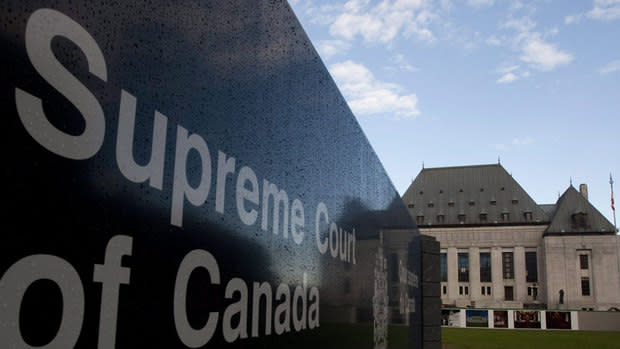 Daily Brew
Daily BrewSupreme Court sends mother accused of concealing dead baby back to trial; no bearing on abortion debate

The slender point of good news coming out of a bizarre case heard by the Supreme Court of Canada is that we finally know the proper definition of a "child" – at least in how it relates to allegations that a mother attempted to conceal the birth of her dead infant.
Everything else in the case surrounding Ivana Levkovic, the woman charged with wrapping her newborn child in a bag and leaving it on her apartment balcony, is somber, macabre and, no matter which way a trial goes, absent of any form of positivity.
It is also likely to reignite the debate around abortion, although a Supreme Court judge took pains to separate the ruling from that testy topic.
The Supreme Court of Canada ruled on Friday that Levkovic must stand trial for the way that she disposed of her dead child in 2006 after a lower court found that the law governing such action was too vague.
The Supreme Court heard that Levkovic's building superintendent found the bag after she had vacated the building. The child was found to be delivered at or near full term, but it could not be determined whether the child was alive at the time of delivery.
[ Related: Supreme Court agrees new trial needed in dead baby case ]
Levkovic was charged with concealing the dead body of a child, but her lawyer issued a constitutional challenge, essentially arguing that a child was not necessarily a child before it was born and therefore the law was too vague.
Section 243 of the Criminal Code states:
Every one who in any manner disposes of the dead body of a child, with intent to conceal the fact that its mother has been delivered of it, whether the child died before, during or after birth, is guilty of an indictable offence and liable to imprisonment for a term not exceeding two years.
The trial judge concluded that the concept of a child that died before birth was too vague because "he could not identify the moment on the gestational spectrum when a fetus becomes the body of a child."
Hokum and word play, frankly. The idea that a child isn't a child is an argument that can be left to the abortion debate. Whether the being in a child or a fetus before birth should not affect this case — it is what was done with that child after the birth that is in question. The being could be a unicorn in utero as long as it isn’t dumped into a plastic bag and tossed aside after it is born.
[ More Brew: Realtor behind ‘homophobic’ newsletter rues ruined life ]
The case wound up in the hands of the Supreme Court, and which unanimously ruled 7-0 that the wording of the law was fine, not vague in the least.
"[T]he appellant’s vagueness challenge does not rest ultimately ― if at all ― on a woman’s constitutionally protected autonomy and privacy interests," Justice Morris Fish wrote in his ruling. "On the contrary, the appellant expressly recognizes Parliament’s right to criminalize the concealment by a woman of the fact that she was delivered of a child that died during, after and even before birth."
The ruling also stressed that the reference to a “child that died before birth” refers only to stillbirths and not miscarriages or abortions, suggesting the decision should have little bearing on the ongoing abortion debate.
At some point in the future, Levkovic will again face the charge of disposing the body of a dead child with intent to conceal its delivery. Now the question remains whether the delivery was intentionally concealed. But at least now we know it was a baby, born dead or alive.

